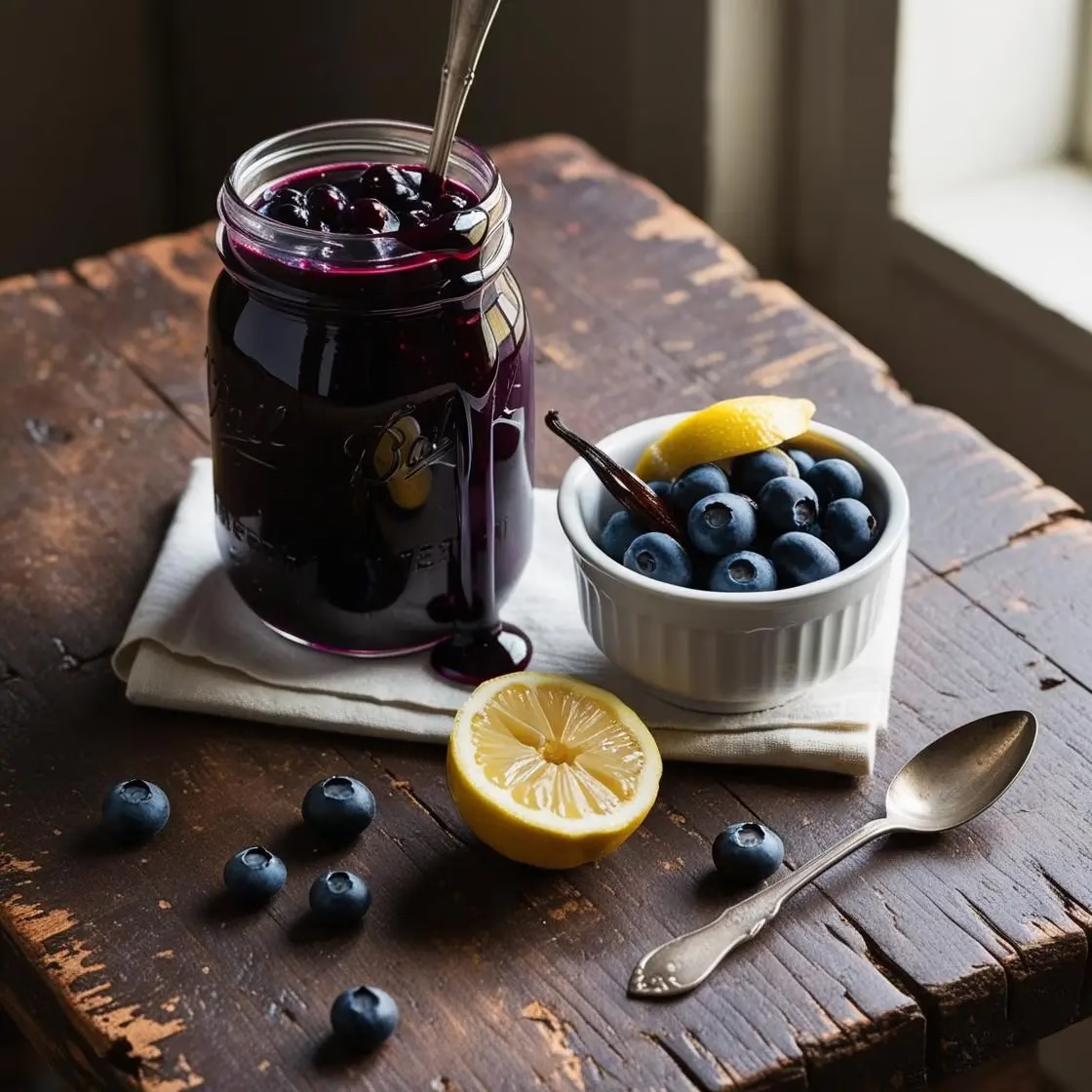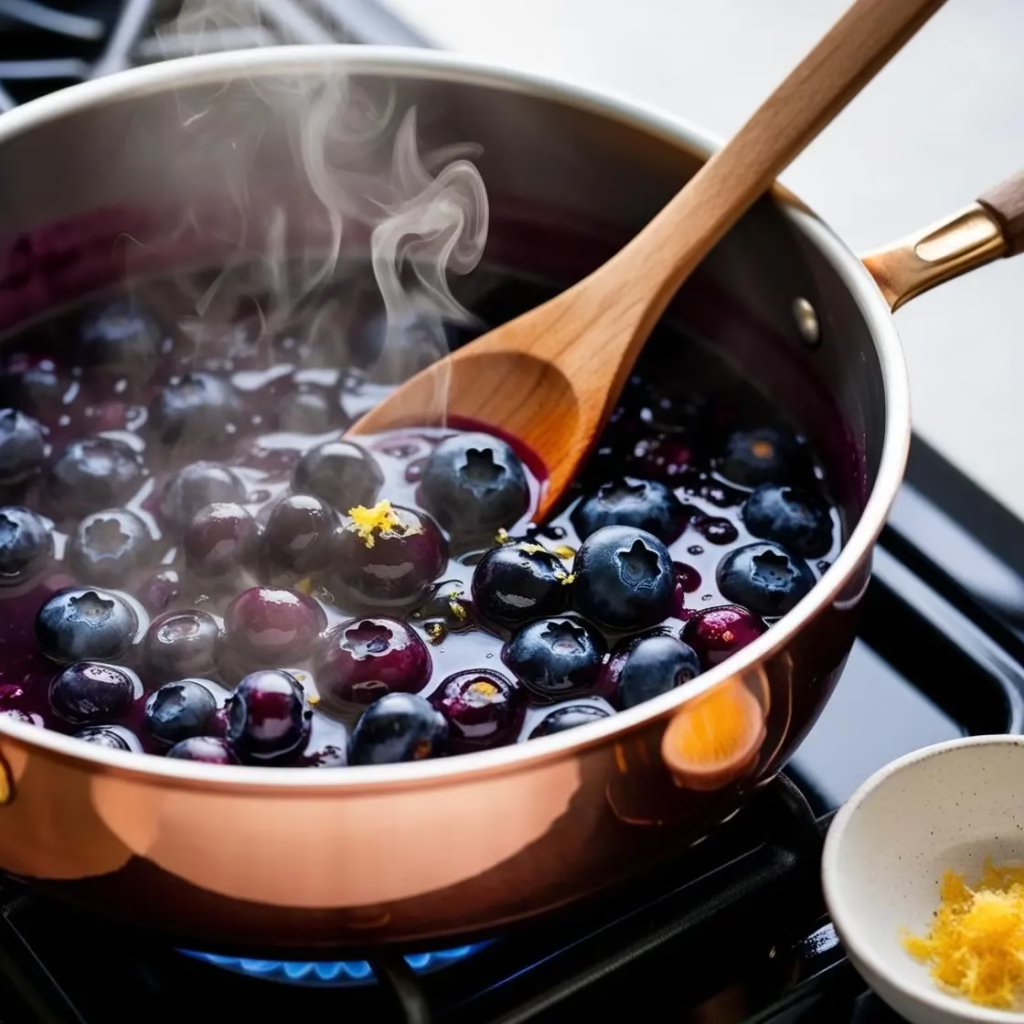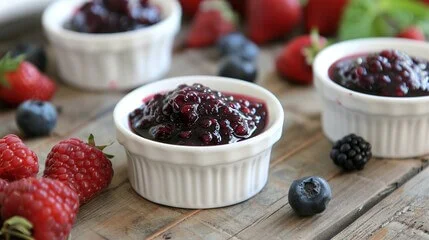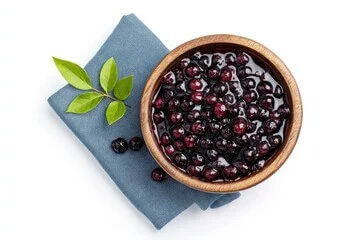Blueberry compote is a simple yet delicious fruit topping that can elevate your favorite breakfasts, desserts, and snacks. Whether you’re drizzling it over pancakes, swirling it into yogurt, or spooning it onto a slice of cheesecake, this sweet and tangy sauce is incredibly versatile.
Making blueberry compote at home comes with its perks—you can control the sweetness, avoid preservatives, and enjoy the unbeatable flavor of fresh or frozen blueberries. Plus, it’s quick and easy to prepare, making it perfect for any celebration or weekday treat.
In this recipe, you’ll learn how to make a simple blueberry compote in just a few steps. We’ll cover the key ingredients, step-by-step instructions, and creative ways to enjoy and store this delightful topping. Let’s get started!
Table of Content
What is A Compote And We Love This Recipe (blueberry compote)?

A compote is a simple and rustic fruit sauce made by cooking fresh or frozen fruits with sugar, and sometimes a bit of water or juice, to create a soft, spoonable texture. Unlike jams or preserves, compotes are not meant to be as thick or set. They retain the natural shape and texture of the fruit, making them an ideal topping for a variety of dishes.
From breakfast to dessert—and even in savory dishes—blueberry compote is one of the most adaptable toppings you can have in your culinary repertoire. Its rich flavor, eye-catching color, and ease of preparation make it a must-have addition to any celebration or everyday meal. Try it in different ways and let it elevate your favorite recipes!

Ingredients Needed for Blueberry Compote Recipe
- 4 cups fresh or frozen blueberries
- 1/3 cup granulated sugar (adjust to taste)
- 1 teaspoon lemon zest
- 2 tablespoons fresh lemon juice
- 1 teaspoon vanilla extract
- 1 tablespoon water (only if using fresh blueberries)
- Pinch of salt
- Optional: 1 tablespoon cornstarch mixed with 1 tablespoon water (for a thicker compote)

Step-by-Step Guide to Making Blueberry Compote
Step 1: Prepare Your Ingredients
- Rinse the blueberries (if fresh) and remove any stems.
- Measure out the sugar, lemon juice, water, and optional ingredients like lemon zest and vanilla extract.
- If you prefer a thicker compote, dissolve the cornstarch in a tablespoon of water to make a slurry. Set it aside.
Step 2: Combine in a Saucepan
- In a medium-sized saucepan, add the blueberries, sugar, water, and lemon juice.
- Stir gently to coat the blueberries with the sugar and liquid.
Step 3: Cook the Compote
- Place the saucepan over medium heat.
- Bring the mixture to a gentle simmer, stirring occasionally.
- As it heats, the blueberries will start to release their juices and soften.
Step 4: Simmer and Thicken
- Allow the mixture to simmer for 5–7 minutes.
- Stir occasionally, gently pressing some of the blueberries against the side of the pan with your spoon if you want a mix of whole berries and a slightly jammy texture.
- If you want a thicker compote, stir in the cornstarch slurry at this stage.
- Continue simmering for another 1–2 minutes, until the compote thickens slightly. It will thicken more as it cools.
Step 5: Flavor Boost (Optional)
- Once the compote is cooked, remove it from the heat.
- Stir in the vanilla extract and lemon zest if using, for an extra layer of flavor.
Step 6: Cool and Serve
- Allow the compote to cool for 5–10 minutes before using if serving warm.
- If you want it chilled, let it cool completely and then refrigerate in an airtight container for up to one week.
Adjusting the thickness of your blueberry compote is essential to achieving the perfect texture for whatever dish you’re pairing it with. Whether you use cornstarch to thicken quickly or let the compote simmer longer to concentrate the flavors naturally, you can control the consistency to create a compote that’s perfect every time.

Tips for Perfect Blueberry Compote
- A splash of balsamic vinegar can add depth and enhance the berry flavor.
- For a smoother compote, gently mash some of the berries with the back of a wooden spoon during cooking.
- Adjust sweetness based on the natural sweetness of your berries and personal preference.
- Add a cinnamon stick or star anise during cooking for warm spice notes (remove before serving).
- For an adult version, stir in 1 tablespoon of bourbon or Grand Marnier after removing from heat.
Blueberry compote is not just for one type of dish—it’s an incredibly versatile topping that can elevate a variety of meals. Whether you’re enjoying it with pancakes, cheesecakes, oatmeal, or waffles, the fresh burst of blueberry flavor is sure to enhance the overall dish. Don’t be afraid to get creative with your servings—whether it’s adding nuts, yogurt, whipped cream, or other fruits, there’s no limit to how you can enjoy blueberry compote in your meals.

Storage
- Refrigerator: Store in an airtight container for up to 2 weeks.
- Freezer: Freeze in freezer-safe containers or ice cube trays for up to 3 months.
- Canning: Process in sterilized jars using proper canning techniques for longer storage.
- Allow refrigerated compote to come to room temperature before serving for the best flavor.
Serving Ideas:
- Drizzle over Date Nut Bread, Banana Bread.
- Spoon over Bisquick Pancake.
- Swirl into Cinnamon Roll Icing.
- Use as a topping for crepes.

Nutrition Information (per 1/4 cup serving)
- Calories: 85
- Total Fat: 0.3g
- Saturated Fat: 0g
- Cholesterol: 0mg
- Sodium: 15mg
- Total Carbohydrates: 21g
- Dietary Fiber: 2.5g
- Sugars: 18g
- Protein: 0.6g
Blueberry compote is the ultimate versatile recipe that combines simplicity, flavor, and endless possibilities. With just a handful of ingredients—fresh or frozen blueberries, a sweetener, and a bit of citrus—you can create a delicious topping that elevates everything from breakfast to dessert. The best part? You can easily customize it to suit your taste preferences, whether you prefer a sweeter compote, a slightly tart variation, or even an adventurous mix of berries.
We’d love to hear about your own experiences! What’s your favorite way to use blueberry compote? Do you have any special twists or tips to share? Feel free to leave a comment or ask any questions about the recipe—we’re here to help and love hearing how our readers are enjoying the compote!
No matter how you choose to enjoy it, blueberry compote is sure to become a go-to favorite in your kitchen. Enjoy the fresh, vibrant flavors, and happy cooking!

« How to Make Blueberry Compote: A Simple and Delicious Recipe »
Description
This luscious blueberry compote features plump, juicy blueberries simmered to perfection in a naturally sweet syrup with subtle hints of lemon and vanilla. The berries maintain their shape while releasing their vibrant juices, creating a versatile topping that adds color and flavor to a variety of dishes. Perfect for elevating breakfast foods, desserts, or even savory applications.
Ingredients
Instructions
- Rinse the blueberries (if fresh) and remove any stems.
- Measure out the sugar, lemon juice, water, and optional ingredients like lemon zest and vanilla extract.
- If you prefer a thicker compote, dissolve the cornstarch in a tablespoon of water to make a slurry. Set it aside.
- In a medium-sized saucepan, add the blueberries, sugar, water, and lemon juice.
- Stir gently to coat the blueberries with the sugar and liquid.
- Place the saucepan over medium heat.
- Bring the mixture to a gentle simmer, stirring occasionally.
- As it heats, the blueberries will start to release their juices and soften.
- Allow the mixture to simmer for 5–7 minutes.
- Stir occasionally, gently pressing some of the blueberries against the side of the pan with your spoon if you want a mix of whole berries and a slightly jammy texture.
- If you want a thicker compote, stir in the cornstarch slurry at this stage.
- Continue simmering for another 1–2 minutes, until the compote thickens slightly. It will thicken more as it cools.
- Once the compote is cooked, remove it from the heat.
- Stir in the vanilla extract and lemon zest if using, for an extra layer of flavor.
- Allow the compote to cool for 5–10 minutes before using if serving warm.
- If you want it chilled, let it cool completely and then refrigerate in an airtight container for up to one week.
Step 1: Prepare Your Ingredients
Step 2: Combine in a Saucepan
Step 3: Cook the Compote
Step 4: Simmer and Thicken
Step 5: Flavor Boost (Optional)
Step 6: Cool and Serve
Notes
- Rinse fresh blueberries and remove any stems. If using frozen blueberries, no need to thaw.
In a medium saucepan, combine blueberries, sugar, lemon juice, lemon zest, and water (if using fresh berries).
Heat over medium heat, stirring occasionally until sugar dissolves and berries begin to release their juices.
Bring to a gentle simmer and cook for 10-15 minutes, stirring occasionally, until some berries burst and the mixture thickens slightly.
For a thicker consistency, add the cornstarch slurry (cornstarch mixed with water), stirring constantly until incorporated.
Remove from heat and stir in vanilla extract and a pinch of salt.
Allow the compote to cool for 5-10 minutes; it will continue to thicken as it cools.
